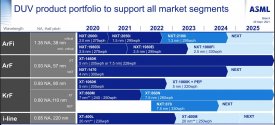Straight to the Shareholders' Meeting | Huahai Qingke: Continue to increase the R&D of high-end equipment and promote the layout of diversified product
Jiwei.com reported that on January 31, Huahai Qingke Co., Ltd. (stock abbreviation: Huahai Qingke, stock code: 688120) held the first extraordinary general meeting of shareholders in 2023. The Proposal on Implementing New Projects with Part of the Over-raised Funds and Self-owned Funds" and the "Proposal on Using Part of the Over-raised Funds to Permanently Supplement Working Capital" were reviewed and voted on. Aijiwei attended the meeting as an institutional shareholder and voted in favor of all the proposals.Overweight high-end equipment research and development
On January 5, Huahai Qingke held the 33rd meeting of the first board of directors and the 26th meeting of the first board of supervisors, deliberated and approved the "About using part of the raised funds to invest in project surplus funds, some over-raised funds and Proposal on Implementing New Projects with Self-Owned Funds", agreeing that the company will use the remaining raised funds of 213.0044 million yuan, over-raised funds of 286.9956 million yuan and self-owned funds of 317.543 million yuan to invest in wholly-owned subsidiary Huahai Qingke (Beijing) Technology Co., Ltd. (hereinafter referred to as "Huahai Qingke Beijing") increased capital and provided it with loans for the implementation of the "Huahai Qingke integrated circuit high-end equipment research and development and industrialization project". The project construction period is expected to be 26 months.
Huahai Qingke said that the implementation of the project is a measure for the company to fully grasp the development opportunities of the semiconductor equipment market and to expand production capacity forward-looking to meet the rapidly growing market demand. And high-end semiconductor equipment such as wet process equipment, fill the gaps in domestic related subdivision fields, realize the company's platform strategic layout, and create more space and new profit growth points for the company's future development.
Sustained rapid growth in performance
On January 20, Huahai Zero2IPO released an announcement on the expected increase in annual performance in 2022. It is estimated that the annual operating income in 2022 will be 1.53 billion to 1.695 billion yuan, an increase of 725 million to 890 million yuan compared with the same period last year. An increase of 90.09% to 110.59%; it is estimated that the annual net profit attributable to the owners of the parent company in 2022 will be 437 million to 517 million yuan, an increase of 239 million to 319 million yuan compared with the same period last year, and a year-on-year increase of 120.40% to 160.75%.
Since its establishment, Huahai Qingke has always adhered to the development route of independent innovation, and has achieved effective breakthroughs and systematic breakthroughs in key technologies such as nano-scale polishing, online detection of nano-precision film thickness, nano-particle ultra-clean cleaning, big data analysis and intelligent control. Layout, developed Universal series CMP equipment, Versatile series thinning equipment, HSDS/HCDS series liquid supply system, accumulated rich technical reserves in the professional field, product technology and performance have reached the domestic leading level, and have entered the domestic major integration The large circuit production line has achieved a good market reputation with excellent product performance, high cost performance and timely and fast after-sales service, which has improved the company's market development capabilities for new customers and new products.

